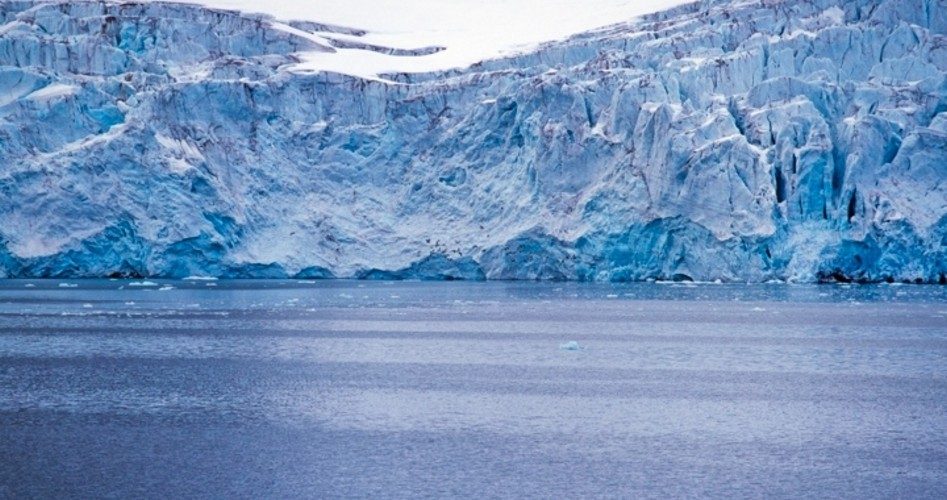
“Scientists warn on Arctic ‘economic time bomb,’” screamed the story headline on CNBC on July 24.
Here is the article’s opening line: “The rapidly melting Arctic is an ‘economic time bomb’ likely to cost the world at least $60 trillion, say researchers who have started to calculate the financial consequences of one of the world’s fastest changing climates.”
Sixty trillion dollars is not exactly chump change. In fact, it’s a big chunk of the global gross world product (GWP), which the CIA and IMF put at somewhere around $71.83 trillion in 2012. But climate experts say that the science and the computer models used to produce this latest nightmarish global-warming scenario are no better than many of the others that have proven false time and time again.
The CNBC article is, actually, a reposting of a story from the British newspaper, the Financial Times, which is based on a lengthy op-ed in the July issue of Nature magazine by Gail Whiteman, Chris Hope, and Peter Wadhams. The author bios for the trio at Nature tell us: “Gail Whiteman is professor of sustainability, management and climate change at Erasmus University Rotterdam, the Netherlands. Chris Hope is a reader in policy modelling at Judge Business School, University of Cambridge, UK. Peter Wadhams is professor of ocean physics at the University of Cambridge, UK.”
The academic trio makes some extraordinary claims, among which are:
We calculate that the costs of a melting Arctic will be huge, because the region is pivotal to the functioning of Earth systems such as oceans and the climate. The release of methane from thawing permafrost beneath the East Siberian Sea, off northern Russia, alone comes with an average global price tag of $60 trillion in the absence of mitigating action — a figure comparable to the size of the world economy in 2012 (about $70 trillion). The total cost of Arctic change will be much higher.
According to Whiteman, Hope, and Wadham, anthropogenic (human-generated) CO2 is the cause of this approaching catastrophe. “It will be difficult — perhaps impossible — to avoid large methane releases in the East Siberian Sea without major reductions in global emissions of CO2,” they assert. Ergo, humanity must adopt rigorous restrictions on energy production from traditional carbon-based sources: coal, oil, gas.
Media Catastrophe Choir Sings on Cue
As to be expected, much of the usual mainstream-media choir has run with the Nature opinion piece, with the usual hyperventilating headlines. However, cooler heads are urging the public to relax and treat the claims with proper skepticism until the “science” behind the claims can be assessed.
Dr. Judith Curry, professor and chair of the School of Earth and Atmospheric Sciences at the Georgia Institute of Technology and President of Climate Forecast Applications Network, used “highly implausible” and “impossible” to describe the conclusions of the Nature op-ed authors. In her Climate Etc. blog for July 25 Prof. Curry wrote:
The plausibility of Wadhams’ scenario rests on two assumptions:
1. the ‘spiral of death’ loss of arctic sea ice
2. connection of the sea ice loss to a massive release of methane hydrates into the atmosphere on the time scale of a decade
Each of these assumptions is highly implausible, based upon my understanding; the combination of these two assumptions into a single scenario seems impossible to me.
So, if you are not a fan of climate models, I suspect that you really will not like impact assessment models used by Wadhams et al.
Joseph D”Aleo, chief meteorologist at ICECAP.us and Weatherbell.com, authored “Arctic Summer Snowstorm” at ICECAP, which provides important data, thermal imaging, photographs, satellite images, and weather station records regarding the true picture of the Arctic ice sheets.
Lewis Paige over at ClimateChnageDispatch.com provides a very timely debunking of Nature’s scary methane scenario, in a July 25 posting entitled “Don’t Panic – ‘$60 Trillion’ Arctic Methane Scare Already Disproven.” Paige notes:
Whiteman, Hope and Wadhams base their suggestion that current Arctic methane emissions are caused by recent, human-driven warming — and so might be expected to accelerate hugely, perhaps — on published calculations from 2010 and last year. This theorising began when airborne surveys discovered that methane was being emitted from the Arctic at various locations along the Siberian continental shelf in recent times….
It turns out to be a guess which was wrong, however. Last year a German research vessel set out for the Arctic to find out more about the mysterious seabed methane emissions. Underwater robots were sent down at promising locations, automatic equipment left on earlier expeditions was recovered, and ground truth was established. Because of the lengthy scientific publishing cycle there aren’t yet any published papers, but the results were so clear – and so important – that the scientists aboard the ship were happy to reveal them publicly.
A statement from Helmholtz-Zentrum für Ozeanforschung (Centre for Ocean Research, aka GEOMAR), the organisation whose ship was used, revealed the “surprising result” that methane emissions from the Arctic seabed are “no new thing”.
“Above all the fear that the gas emanation is a consequence of the current rising sea temperature does not seem to apply,” GEOMAR bluntly stated. “The observed gas emanations are probably not caused by human influence,” commented Professor Dr. Christian Berndt, the expedition leader. “At numerous emergences we found deposits that might already be hundreds of years old…. On any account, the methane sources must be older.”
Related articles:
Obama Launches New Global Warming Video as Phony “Consensus” Crumbles
Cooking Climate Consensus Data: “97% of Scientists Affirm AGW” Debunked
German Firms Flee to U.S. to Avoid Staggering “Green” Energy Costs
Global Warming “Consensus”: Cooking the Books
Climate “Consensus” Con Game: Desperate Effort Before Release of UN Report



